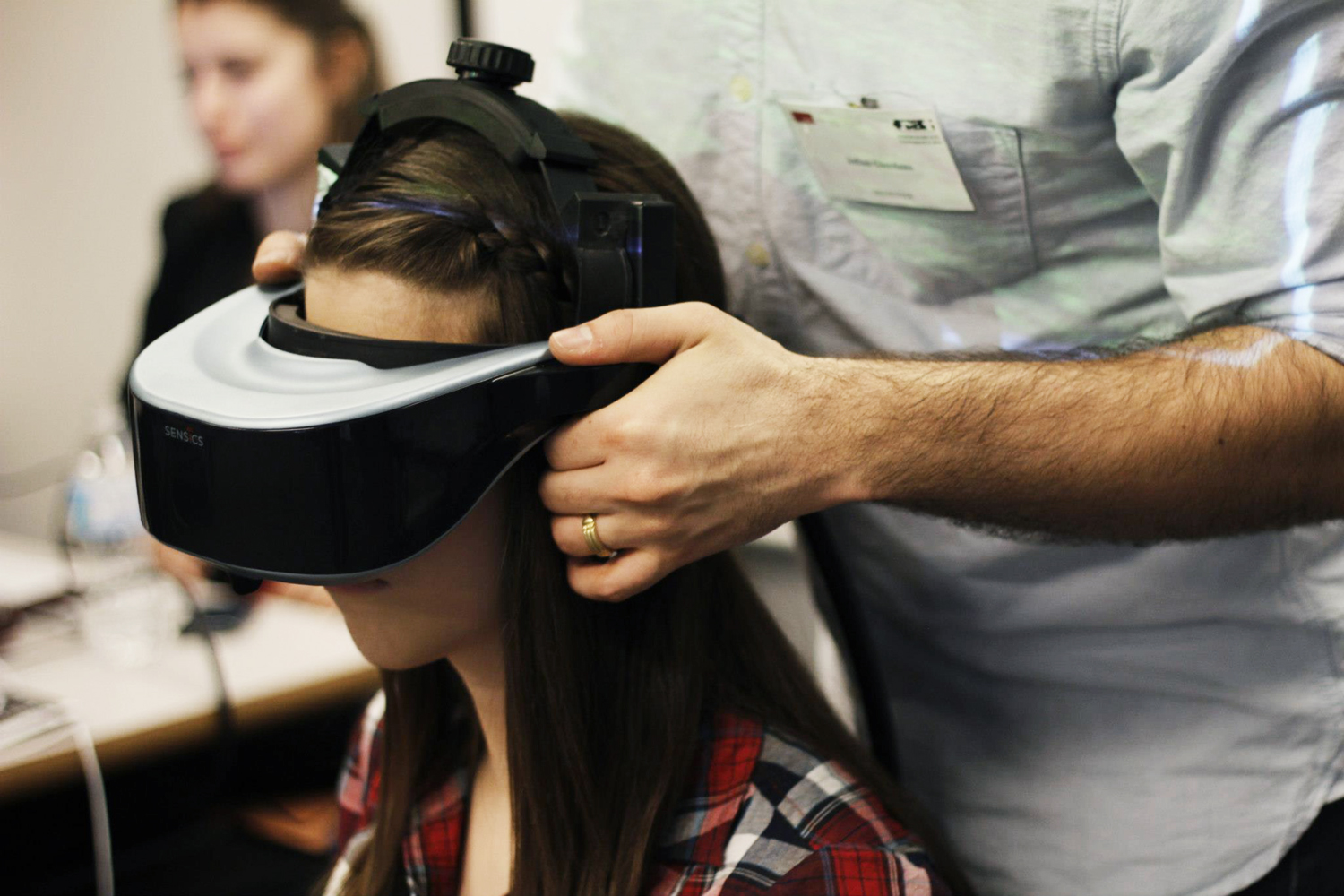What is “The Machine” and how does it affect our day-to-day lives? SFU undergraduates tackled this question using various creative approaches at the Faculty of Communication, Art and Technology’s (FCAT) fourth annual Undergraduate Conference, held on Mar. 5 at the Goldcorp Centre for the Arts.
Open to students from the School of Contemporary Arts (SCA), Communications (CMNS), and Interactive Arts and Technology (SIAT), the conference showcased papers, installations, and performances based on the theme of “The Machine.”
Undergraduate students had unlicensed freedom to submit a proposal based on their interpretation of what “The Machine” could mean, as long as it was based on academic research. The submissions were subcategorized into three genres: Security, Patterns, and Reflection.
SFU President Andrew Petter and vice president, academic and provost Jon Driver both made appearances at the conference. Driver spoke of the event as an “experience of refined and genuine” presentations. He also discussed the “distinguishing features of SFU,” which, as “innovative education, cutting edge research and community outreach,” are utilized in building significant knowledge and insight for the students.
Driver also took the opportunity to congratulate the participating students directly for “all they have achieved and all they will achieve.”
Many presenters had notable and interesting concepts, which intrigued their peers, instructors, and any curious attendees. SIAT students Justin Chan, Jong Won I’m, Kateryna Jones, Bobby Soetarto and Bianca Zhu created an Interactive Projectional Environment which challenged the way people view their surrounding environment.
They used “‘The Machine’ that we use everyday — the computer — to encourage people to acknowledge their environment and consider the implications of high technology in our world.
Two other SIAT students, Lam Kwan and David Yang Li, presented “an advanced mind-controlled robot called IRobo.” IRobo aims to aid the disabled, helping them to “experience a richer life and be a part of the community again.” Furthermore, the project “explores the idea of an advanced mind-controlled robot that allows the user to live in an idealized form.”
By contrasting the positive and negative aspects of such a device through their video, the team explored the ideas that arise from frequent use and control of machines and technology.
SCA student Alex Stursberg created a two-part sculptural work entitled “The Political Economy of Painting,” which “considers the relationship of art-making and labour, while reflecting on manufacturing, industry, and the economics of art.” Stursberg said that, as an art assistant, he sees this “other end of the creation process” after the painting is finished.
The “waste material” used in the structure, such as paint tubes, represented the other end of the industry. By comparing the labour structure, he scrutinized this machine as being a societal representation. As the forces of labour shift, as the way with which society relates to work changes, so does the machine we fit into.
Beth Padfield, program coordinator, was excited by the day’s interdisciplinary efforts. She mentioned this conference as a way of getting different faculties together, working for similar interests, and developing a fascination for technology and society.
In the end, Padfield felt the conference’s greatest success was the collaboration of creativity and critical thinking, all because it “got [the students] in the same room so they can start talking to one another.”


